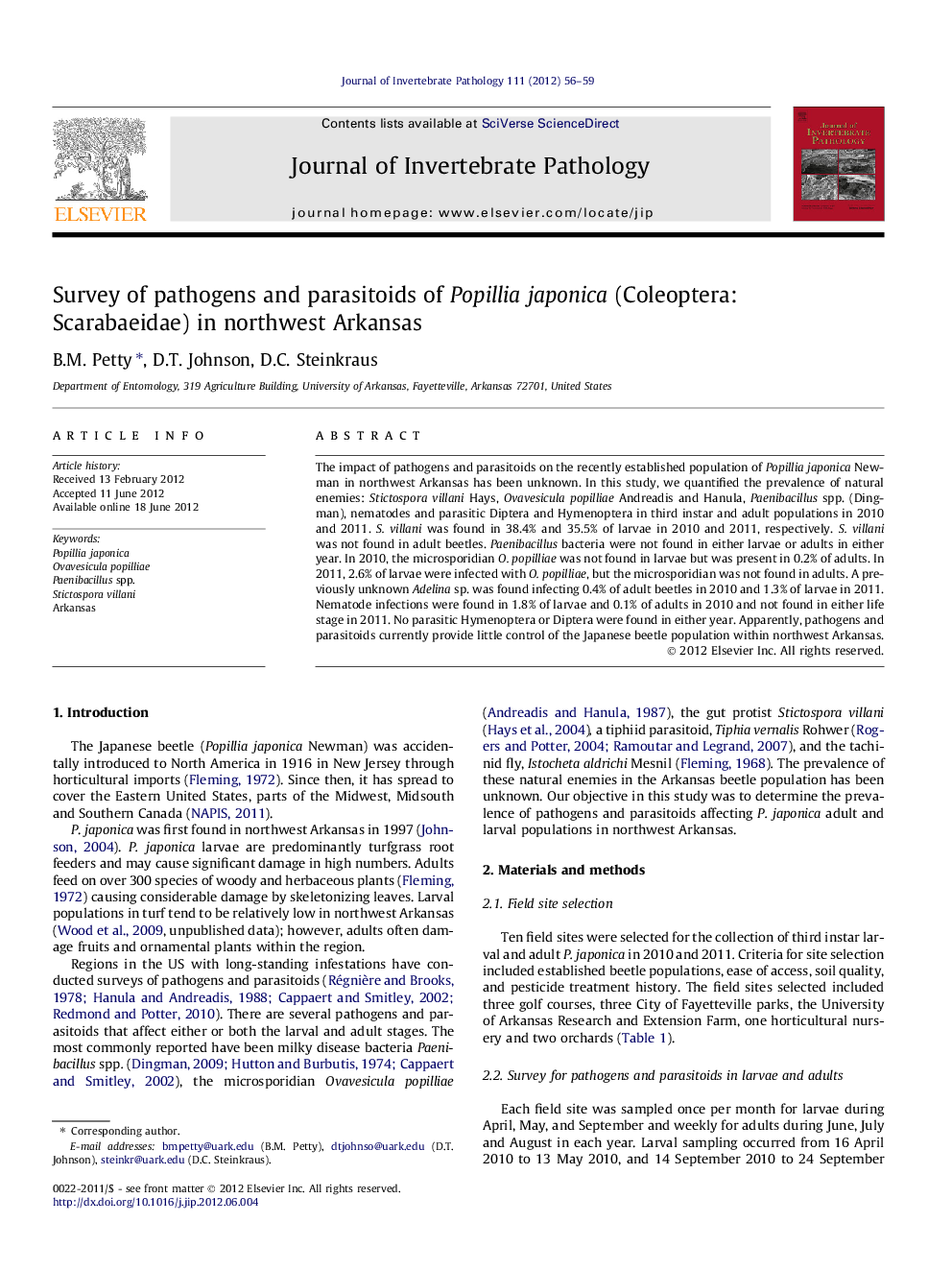| Article ID | Journal | Published Year | Pages | File Type |
|---|---|---|---|---|
| 4557883 | Journal of Invertebrate Pathology | 2012 | 4 Pages |
The impact of pathogens and parasitoids on the recently established population of Popillia japonica Newman in northwest Arkansas has been unknown. In this study, we quantified the prevalence of natural enemies: Stictospora villani Hays, Ovavesicula popilliae Andreadis and Hanula, Paenibacillus spp. (Dingman), nematodes and parasitic Diptera and Hymenoptera in third instar and adult populations in 2010 and 2011. S. villani was found in 38.4% and 35.5% of larvae in 2010 and 2011, respectively. S. villani was not found in adult beetles. Paenibacillus bacteria were not found in either larvae or adults in either year. In 2010, the microsporidian O. popilliae was not found in larvae but was present in 0.2% of adults. In 2011, 2.6% of larvae were infected with O. popilliae, but the microsporidian was not found in adults. A previously unknown Adelina sp. was found infecting 0.4% of adult beetles in 2010 and 1.3% of larvae in 2011. Nematode infections were found in 1.8% of larvae and 0.1% of adults in 2010 and not found in either life stage in 2011. No parasitic Hymenoptera or Diptera were found in either year. Apparently, pathogens and parasitoids currently provide little control of the Japanese beetle population within northwest Arkansas.
Graphical abstract.Figure optionsDownload full-size imageDownload as PowerPoint slideHighlights► We estimated the prevalence of natural enemies of Popillia japonica. ► Stictospora villani was the most common natural enemy. ► Ovavesicula popilliae and nematodes were both present but uncommon. ► No parasitoids or Paenibacillus popilliae found in larval or adult beetles. ► First record of an Adelina sp. found infecting Japanese beetles.
